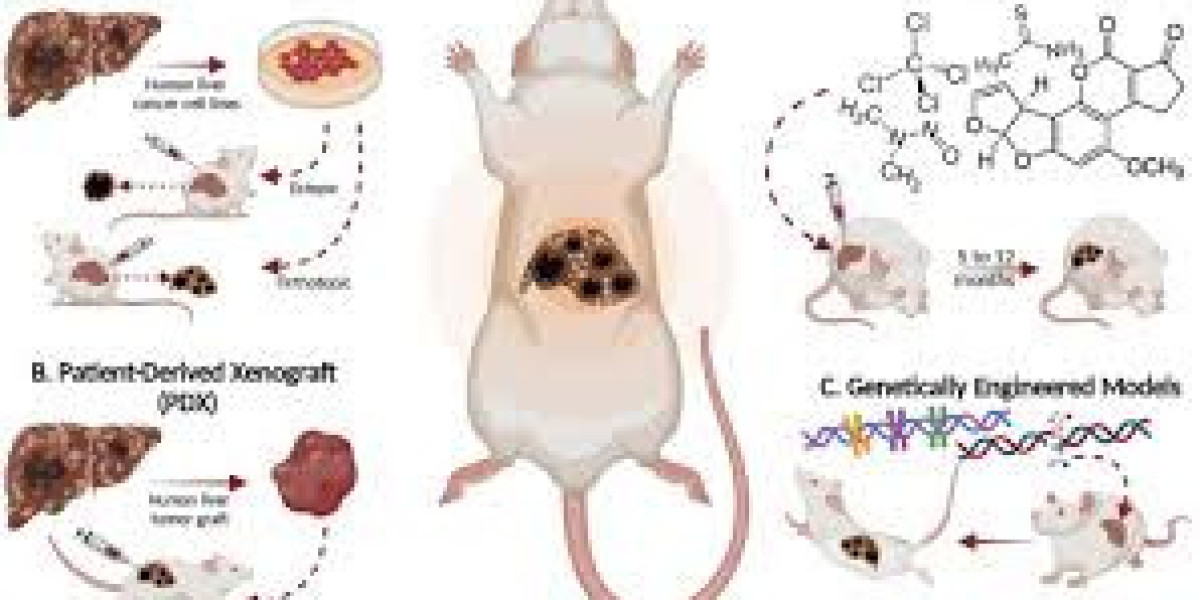Tumor models have emerged as a cornerstone in this endeavor, offering researchers the means to study cancer's behavior, progression, and response to therapies in controlled environments.
What Are Tumor Models?
Tumor models are experimental systems that replicate the characteristics of human tumors. They enable scientists to explore the underlying mechanisms of cancer and test potential treatments before they move to clinical trials. Tumor models can be classified broadly into in vitro and in vivo systems, with each offering unique advantages and limitations.
Types of Tumor Models
1. In Vitro Models
2D Cell Cultures: These involve growing cancer cells on flat surfaces in petri dishes. While widely used, they lack the three-dimensional structure of real tumors, which limits their ability to mimic the tumor microenvironment.
3D Organoids: Created from patient-derived cells, organoids are miniaturized versions of tumors grown in three dimensions. They closely replicate the architecture and functionality of real tumors, making them highly valuable for personalized medicine and drug screening.
2. In Vivo Models
Syngeneic Models: Tumor cells derived from the same species are implanted into immunocompetent animals. These models are particularly useful for studying immune system interactions with tumors.
Patient-Derived Xenografts (PDX): Human tumor tissue is implanted into immunodeficient animals. PDX models retain the genetic and histological characteristics of the original tumor, making them highly predictive for human clinical outcomes.
Genetically Engineered Models (GEMs): Animals are genetically modified to carry mutations commonly associated with human cancers. GEMs are invaluable for studying cancer initiation and progression at the molecular level.
Applications of Tumor Models
1. Understanding Tumor Biology
Tumor models provide a platform to investigate cancer’s molecular and cellular mechanisms. Researchers can study how tumors grow, invade surrounding tissues, and metastasize to distant organs.
2. Drug Development and Testing
From initial discovery to preclinical evaluation, tumor models are essential for testing new cancer therapies. They help determine drug efficacy, optimize dosages, and identify potential side effects.
3. Immunotherapy Research
The advent of immunotherapy has transformed cancer treatment. Tumor models, especially syngeneic and humanized models, are critical for evaluating how therapies like immune checkpoint inhibitors and CAR-T cells interact with tumors.
4. Personalized Medicine
With the rise of precision oncology, tumor models such as PDX and organoids allow clinicians to test therapies on models derived from individual patients, ensuring treatments are tailored to each person’s unique cancer profile.
Challenges in Tumor Modeling
Despite their immense utility, tumor models are not without limitations:
Lack of Complexity: Simple models, such as 2D cell cultures, fail to replicate the complexity of the tumor microenvironment.
Species Differences: Results from animal models do not always translate directly to humans due to biological differences.
Cost and Time: Developing and maintaining advanced models like PDX or organoids can be expensive and time-consuming.
Innovations Driving the Future of Tumor Models
1. Organs-on-Chips
Microfluidic devices that mimic the structure and function of human tissues are emerging as a promising alternative to traditional models. Tumor-on-chip technology allows researchers to study cancer in a highly controlled environment.
2. Artificial Intelligence (AI)
AI-driven computational models are increasingly being used to simulate tumor behavior and predict responses to treatments, complementing experimental models.
3. CRISPR-Cas9 Gene Editing
The ability to edit genes precisely has revolutionized the development of genetically engineered models, enabling researchers to study specific cancer mutations and pathways.
Conclusion
Tumor models are an indispensable component of cancer research, bridging the gap between basic science and clinical application. As technology continues to evolve, the development of more sophisticated and accurate models will accelerate discoveries and improve outcomes for patients. By integrating these advancements, the fight against cancer is becoming increasingly precise, targeted, and hopeful.








